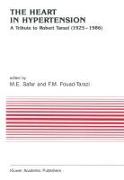The Heart in Hypertension
BücherAngebote / Angebote:
Hypertension is the major cause of left ventricular hypertrophy. While the electrocardiogram is an extremely insensitive measure of anatomic left ven tricular hypertrophy, it provides a time-tested important marker of an adverse cardiovascular outcome. There has been a recent temporal decrease in the incidence of electrocardiographic evidence of L VH even within the hyperten sive population, no doubt this is the result of large antihypertensive treatment experts. Anatomical evidence of left ventricular hypertrophy is best docu mented pre-morbidly using echocardiographic techniques. It therefore ap pears that between 20 and 50 percent of the hypertensive population has left ventricular hypertrophy by echo cardiographic techniques. The prognostic significance of the echocardiographically determined increase in left ventric ular mass is just beginning to be evaluated. Early information suggests that there is an increased rate of cardi~)Vascular morbidity in patients with echo car diographic evidence of increased left ventricular mass. However, this in formation is only preliminary, and as yet only a limited number of events have been reported. Far more supporting information will be required before the full impact of echocardiographically-detected left ventricular hypertrophy can be determined. Nevertheless, it must be stated that the electrocardiogram still has the greatest predictive value of cardiovascular morbid and mortal events when the pattern of left ventricular hypertrophy plus repolarization abnormal ities are present.
Folgt in ca. 15 Arbeitstagen
